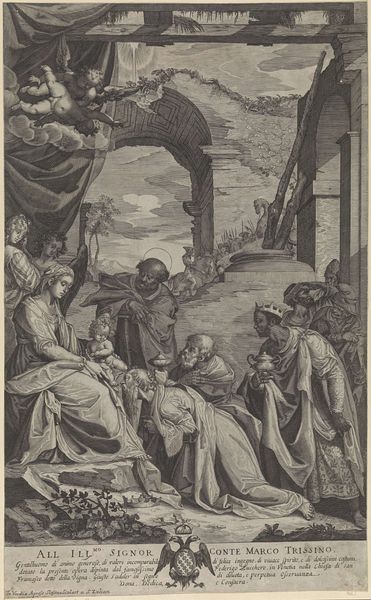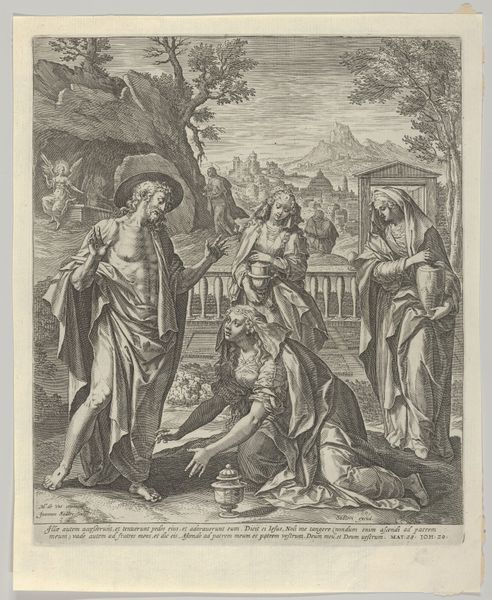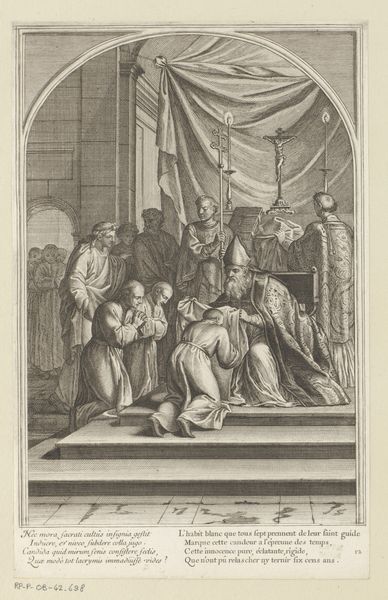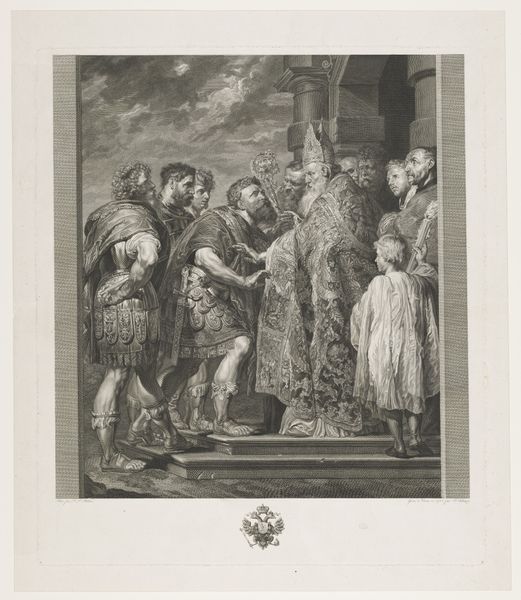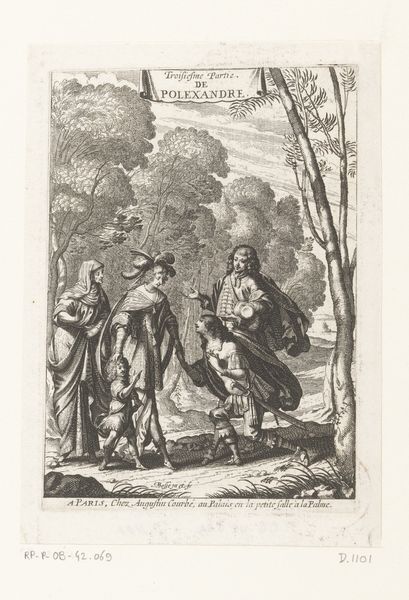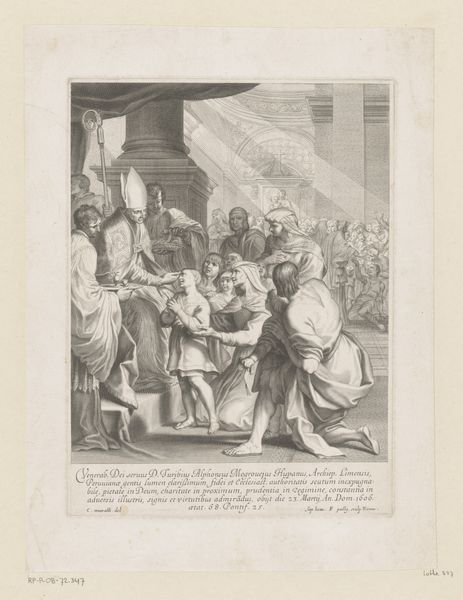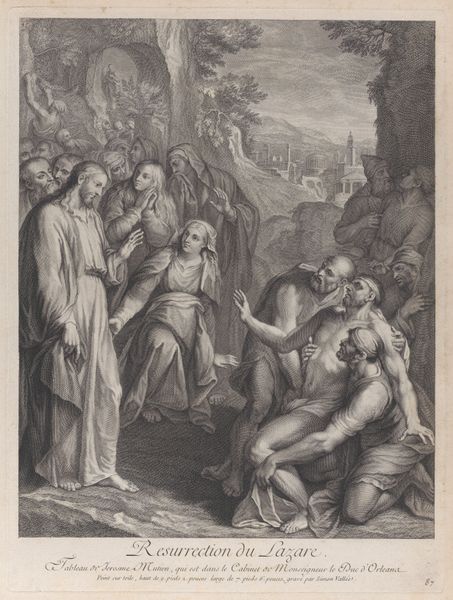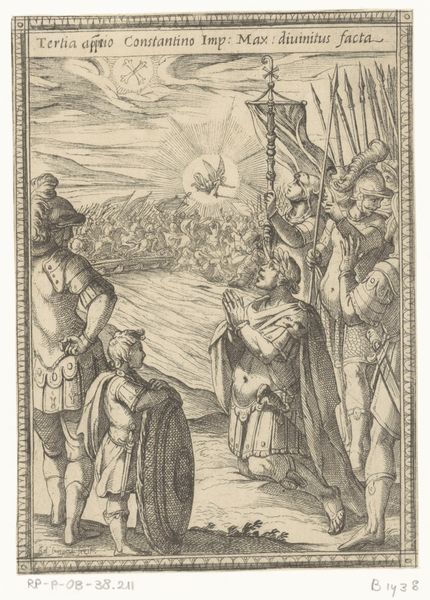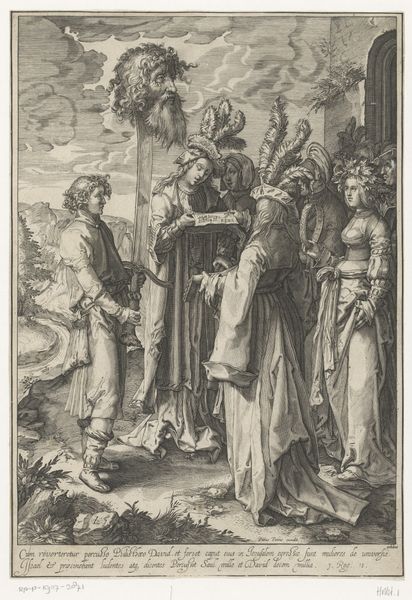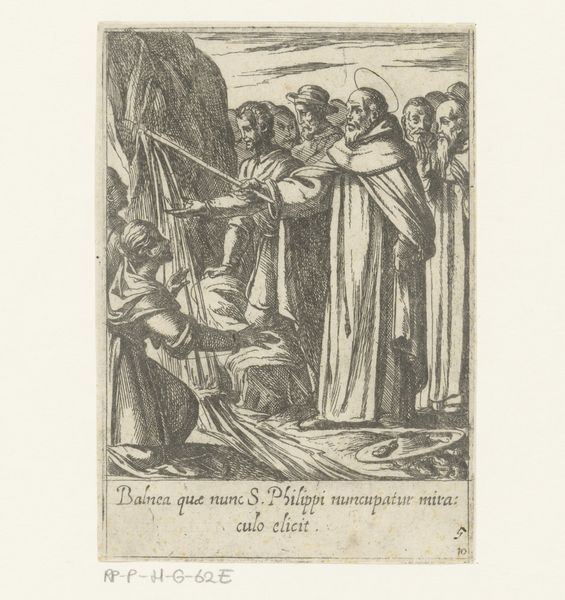
print, engraving
#
baroque
# print
#
old engraving style
#
figuration
#
group-portraits
#
genre-painting
#
history-painting
#
engraving
Dimensions: height 502 mm, width 309 mm
Copyright: Rijks Museum: Open Domain
Curator: Jean Baron created this engraving, titled "Romualdus van Ravenna met zijn volgelingen," some time after 1655. It depicts Romualdus of Ravenna with his followers. What strikes you most immediately about it? Editor: The stark linearity. It’s so graphic. The landscape in the background almost has a fantastical quality. What era are we considering with its placement of figures? Curator: We see this work arising in the Baroque period, where grand narratives, dramatic scenes, and emotional intensity were favored. Consider that against the backdrop of the Counter-Reformation and the efforts to reaffirm religious authority through art. This piece might function within those concerns. Editor: Baroque engravings offer unique challenges and possibilities. I'm looking at the foregrounded figures of Romualdus and his followers – observe how Baron delineates the fabrics of their robes and the faces in great detail, how this is offset by a hazy almost dream-like portrayal of the monks in the background. It feels carefully considered. Curator: Precisely. It is history painting rendered through a particular lens. Romualdus was known for founding the Camaldolese order, a branch of Benedictine monasticism. He lived a life dedicated to solitude and reform within the Church, which can tell us about the values Baron is seeking to affirm in this portrait. Editor: There's such careful play of light and shadow in the work too, which draws me to it all the more. The hatching technique truly brings volume to their forms in these simple white robes, with their tonsured heads drawing me to study them more. What more can you say of this order of monks, though? Curator: The order was known for its emphasis on both communal and solitary life, balancing these aspects in its monastic practices. Within this piece, we observe the historical power structures between the religious orders, society at large, and the visual cultures of the time, with specific implications for gendered representations and the broader intersectional narratives that defined the epoch. Editor: Thank you for shedding some light onto Baron's narrative; I must admit I got utterly swept up in the craftsmanship. Curator: No, thank you. Thinking of this moment in history offers unique insights when regarding Baron's figures.
Comments
No comments
Be the first to comment and join the conversation on the ultimate creative platform.
